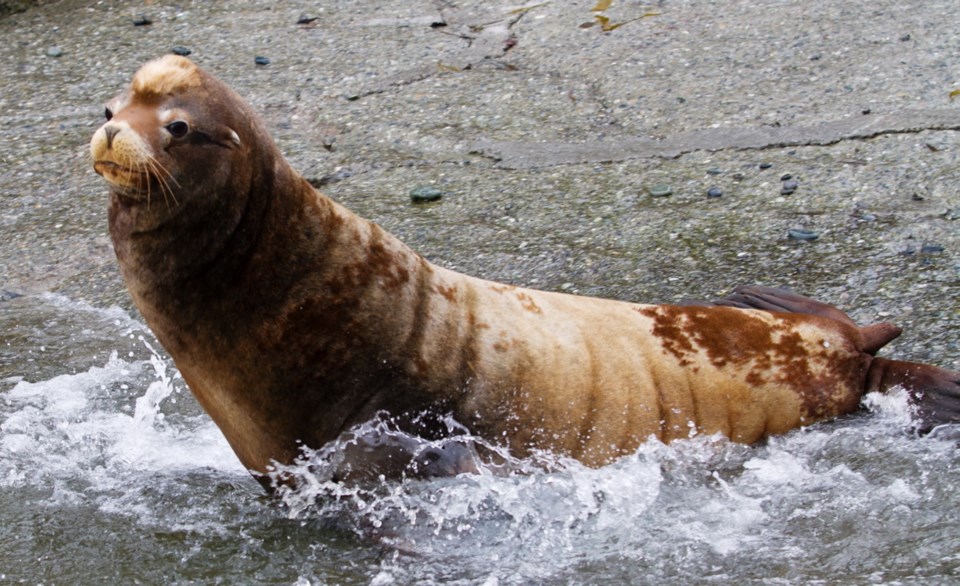The head of a decapitated sea lion that washed ashore in Vic West was likely taken as a trophy, says the president of an Indigenous group lobbying for expanded pinniped harvesting rights.
When Vic West resident Paul Primus first saw the sea lion last week, the head was still attached.
The carcass remained near the Songhees Walkway for a few days and then, “mysteriously, the head was gone,” said Primus, who lives nearby and visits the waterfront most days.
“Somebody went down there and cut the head off. Why would somebody do that?”
There have been several recent reports of headless sea lions on shores near Campbell River, and in 2013, at least four sea lions were found without heads in a five-month period. At the time, the Department of Fisheries and Oceans said they were looking into whether there was an emerging trade in the animal’s skulls.
Tom Sewid, president of Pacific Balance Marine Management, said he has seen online posts of buyers looking for sea lion skulls.
“We’re seeing headless sea lions washing up on the beaches. It’s telling me that someone’s found out there’s a black market where you can sell those skulls,” said Sewid, a commercial fisherman who splits his time between Nanaimo and Washington state.
Sewid said someone might also have cut the head off to keep as a trophy.
“So they can go put the skull on the mantelpiece,” said Sewid, who is Kwakwaka’wakw from Alert Bay. His group believes the over-protection of pinnipeds such as seals and sea lions has led to an overpopulation of the animals, and that their appetite for salmon is affecting fish stocks and the resident orca population. They are lobbying to be allowed to harvest the animals more widely.
The removal of the head is an indication that it was taken by someone who is non-Indigenous, Sewid said, because he and other First Nations hunters harvest the whole animal, particularly the hides, which can be used to make regalia.
According to DFO, it’s not uncommon for intact dead sea lions to wash ashore on Vancouver Island, but “from time to time individuals may tamper with the animals once beached.”
Hunting sea lions is banned in B.C., with controlled exceptions for Indigenous rights to harvest for food, social and ceremonial reasons. If an animal was shot in the head, decapitating the animal would remove evidence of illegal hunting.
“If this is determined to have been done in an effort to knowingly tamper with evidence, this would be an offence under the Criminal Code of Canada,” DFO said in a statement.
DFO’s conservation and protection branch is aware of social media discussions related to pinnipeds and is monitoring them.
Four of the 77 dead sea lions that have been reported to have washed ashore on the Island were shot, DFO said in a statement.
The animals are sometimes targeted by commercial fishermen who see them as pests, because they’re known to take fish from a net, said Charlotte Dawe, conservation and policy campaigner for the Wilderness Committee.
“Sometimes fishermen will shoot sea lions from boats,” she said.
In the case of the animal that Primus discovered in Vic West, the head was removed after the animal came ashore, but that might not always be the case.
Rhonda Reidy, a University of Victoria PhD candidate studying foraging behaviour of humpback whales, said a sea lion could lose its head to a boat strike or naturally after death.
“If the deceased animals were drifting and decomposing over time, then the weight of the skull can cause the head to naturally disarticulate from the body,” she said in an email.
Reidy said without examining the carcass, it’s impossible to determine if the head was removed by a person or detached naturally.
The body of a sea lion often drifts ashore after it dies and anyone who spends time on the water or on beaches is likely to encounter a carcass eventually, she said.



